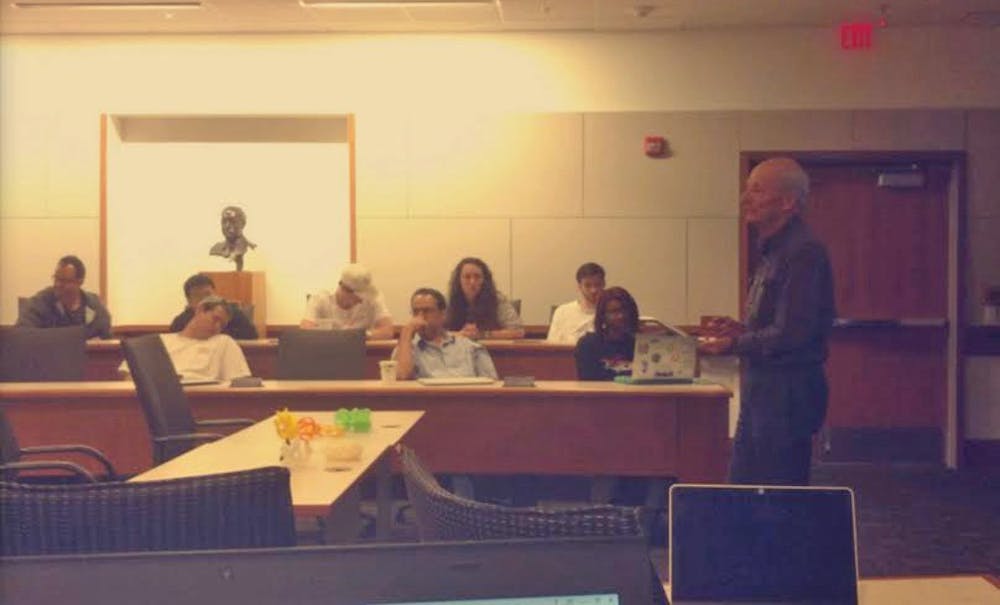Sequin told the story of his career path to the tune of “oohs” and “wows” from the audience. In 1969, he received his Ph.D. in experimental physics from the University of Basel in Switzerland. He started working at Berkeley in 1977 and helped introduce the concept of reduced instruction set computing processors in the 1980s.
Sequin has spent the last two decades collaborating with artists and mathematicians — using computer graphics and the emergence of 3D printers to create abstract geometric sculptures.
He said he developed a passion for geometry when he worked on a project in school.
“I thought it was very cool,” Sequin said. “And ever since, I’ve had geometry in my bloodstream.”
Justin Wilson, a graduate student studying computer science, said he couldn’t put his pencil down as he took notes enthusiastically during the lecture.
“UNC is definitely well-known for its graphics capabilities,” Wilson said. “I think in the future with virtual environments and being able to model in those areas and being able to visualize things is very important. And for him to be able to obtain that from mathematics is very inspiring.”
Jim Hirschfield, chairperson of the art department, said he didn’t know much about Sequin, but he was excited about the opportunity for students to learn.
“It’s a good opportunity to have a seminar that art students and computer science students could meet and have an opportunity to talk about art and math and the similarities between each other,” Hirschfield said. “I’ve long been a supporter of interdisciplinary research and teaching. I never know what’s going to come out of it, but I’ve found that if you give students the opportunity, they find a way to learn and get something positive out of it.”




